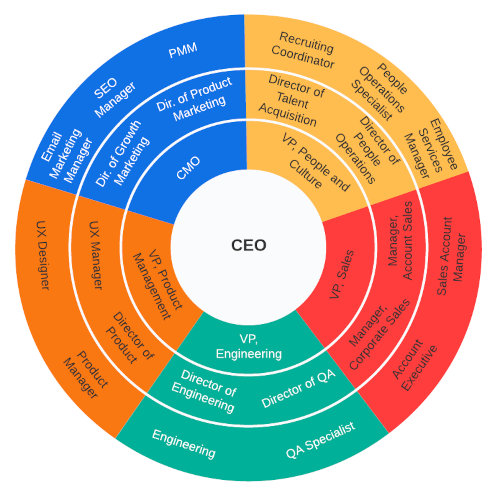Building a better bottom line for your P&L statement is the primary obligation of the CFO and CEO of any organization. Even in sole-proprietorships, getting your expenses lowered while expanding your income streams is foundational to your business success.

There are various ways to lower expenses while adding income, from downsizing your workforce and rental space to increasing your customer base. However, regardless of your strategy, unless your business is better organized, you may end up spending wasted time chasing more revenue inefficiently.
The Key Steps To the Process
Organizing your company structure is the first step. Once you have your company organized, what needs to happen next is determining how much physical space is vital to operate. Creating an organizational business chart helps explain the hierarchy and expected roles within your business to allow colleagues, employees, customers, and vendors to understand who is in the chain of command for different problems and needs.
In other words, organizing the roles within your business and organizing the space you operate will help compartmentalize tasks such as accounting, logistics, and even human resources that will hopefully make each department more efficient as an outcome.
For example, setting aside a position for human resources that can handle employee compliance, benefits, and complaints helps create a neutral body that represents the employees’ interests within the framework that your organization may provide.
This department can handle anonymous issues that need to be conveyed to management without reprisal while allowing management to take disputes and benefits to each organization member.
Without this role in the business, all the needs of the company and each individual may lack representation, clear communication, and support that may be needed, taking precious time away from other tasks within your business. Another way to make your business more efficient in its operations is to outsource as much as possible.
Outsourcing As An Income Opportunity
Housing an accounting office, print shop, and other services that can easily be outsourced, can be costly in terms of payroll and the rental space needed to house those departments. There are various managed print service options and bookkeeping solutions, from hiring out to a CPA or using a software service to handle your accounting needs.
You may also consider fulfillment centers as a way to meet your logistical demands. With a fulfillment center, you pay to have your brand housed, packaged, and shipped by a third party without having to take on the overhead of warehousing and labor associated with package logistics. There are all types of organizational charts, from hierarchical to functional and cross-functional or “matrix” style.

The Three Traditional Types Of Organizational Charts
- Hierarchy: A hierarchical organizational chart is one we’ve already discussed. It explains the role of each administrative position within the organization and the duties needed for each job.
- Functional: A functional diagram collects information for every member within your company, from personal details to job roles, reporting supervisors, and more.
- Matrix: A “matrix” or cross-functional style may be necessary if you have job positions that report to more than one supervisor or for jobs with multiple roles within your business.
An Alternative To Traditional Models
There is one last option for organizing your business, and that is the circle diagram. The circle alternative is a newer model, one that is popular with non-traditional operations, such as those in the software sphere or other similar types of business offerings.

photo credit: Lucidchart
One alternative to traditional org charts is to eschew the hierarchical type and create a circle diagram. A circle diagram may be a good option for startups with multiple roles or small businesses looking to remain light and flexible. In a circle diagram, the functions of each position are interrelated and blend without a transparent chain of command lines.
Once your business clearly explains titles and job roles and how each department interrelates, you’ll be more efficient in your decision-making and problem-solving. This efficiency will streamline your business, making it more fluid and agile to expand and grow, which is the point of a business.
The administration’s priority is to grow the income opportunities without expanding the bottom line. Developing a clear organizational chart within your operations will help guide every team member and administrator to maximize the growth opportunities.


